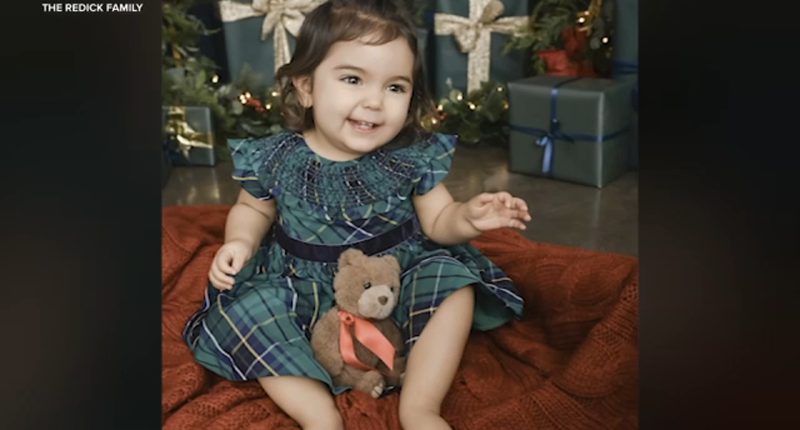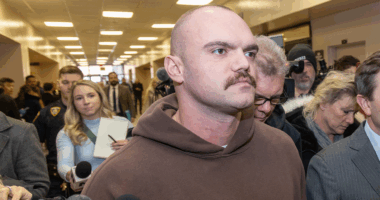Share this @internewscast.com
LOS ANGELES — A rare, genetic disorder that’s often misdiagnosed as autism is robbing a young California girl of her life.
With no known treatment or cure, her parents are tackling an impossible dream: finding a cure and hopefully help others along the way.
The story of Vivienne Redick
As an infant, 2-year-old Vivienne Redick’s gaze offered a clue her parents couldn’t interpret.
“She did this little stare, and I didn’t know that was a seizure. It was so quick,” said Vivienne’s mom, Yvette Yates Redick.
Vivienne is Yvette and Shaun Redick’s third child. Her pregnancy and birth were healthy and routine.
“She is a happy baby,” said Yvette.

Although Vivienne appeared to develop a bit slower than usual, her mother only became worried when Vivienne was about eight months old, afflicted by a severe fever leading to seizures, as observed by her pediatrician.
Following numerous evaluations, genetic sequencing diagnosed Vivienne with BPAN, a rare genetic condition known as Beta-propeller protein-associated neurodegeneration, which progressively worsens.

Time is not on Vivienne’s side.
“Mostly girls are affected. It’s progressive, and it gets worse with time. They don’t have a long, life span,” said Yvette.
What is BPAN?
BPAN was first identified in 2012. Back then, there were about 100 known cases. Now, scientists estimate there are about 750 worldwide.
BPAN is not inherited. It’s a genetic mutation on the X chromosome that can happen randomly. With so few cases, there is no known treatment nor cure.
“So many told me, ‘It’s not even in our system, we don’t know about this. We can’t help you,'” said Yvette.
As Hollywood filmmakers, the Redicks are doing what they know best. They’re reaching out, networking and getting their daughter’s story out there.
The couple has even created a public service announcement.
“Our world changed dramatically when Vivienne was diagnosed with a rare genetic disease,” said Shaun Redick in the PSA.
They found hope at the world’s first BPAN clinic at Children’s Hospital of Philadelphia.
Scientists are working on a novel way to penetrate and transport DNA information into brain cells.
“A capsid serves as the protective shell of a virus, used by us as a vessel to introduce new genetic information into cells,” explained Dr. Laura Adang from CHOP, highlighting their team’s significant efforts in developing innovative or modified capsid forms.
“I think their proposal is for five years, and it’s about $2 million per year, so it’s not inexpensive,” said Yvette.
The couple is working with BeatBPAN.org to fund this research.
An impossible dream, but one the Vivienne’s family believes is within reach.
“I’m excited about the potential. You know, there could be a cure. You could, like, live a long life, maybe? I don’t know, and I’d want that for her,” said Vivienne’s mother.
Vivienne is learning and progressing, but BPAN patients often peak in their teen years and then decline.

The disorder is often misdiagnosed as autism, and researchers estimate there may be thousands in the U.S. with BPAN and don’t know it. The Redicks hope with your help, they can help Vivienne and many like her.
“I want her with us. Everyone’s belief that they can help, it means a lot,” said Yvette.
Copyright © 2025 WPVI-TV. All Rights Reserved.
















